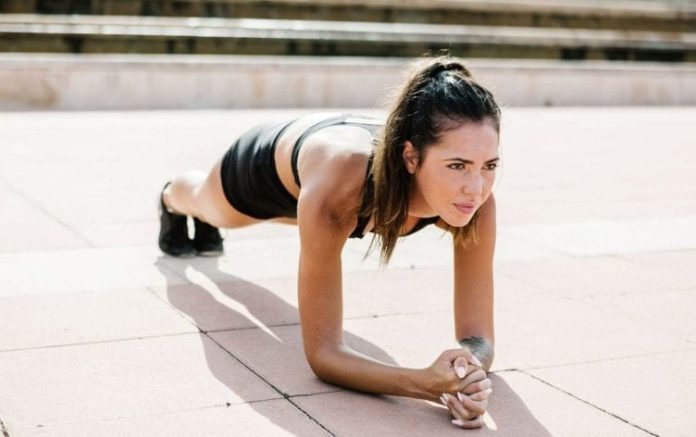
Recently, runners have come to understand strength and core workouts play an essential role in health and consistency. Whether you’ve been training hard and racing for years, or you’re new to running, core strength is vital to help your body handle the repetitive impact of your favorite sport.
When you first think about core, you probably envision six-pack abs glistening on a chiseled athlete on social media. If that helps motivate you to strengthen your core, then go for it. But core work for runners is about the deeper strength and function behind those muscles and includes more body parts than you might expect.
THE VALUE OF CORE WORKOUTS
Why is a strong core so valuable to runners? It may seem far less important than leg strength when you’re pushing hard in a race, but a strong core is constantly at work behind the scenes, helping your body work more efficiently.
Your core is like a platform, and all your movement originates from there. If that platform isn’t stable, you can find yourself running less efficiently, especially as you fatigue. Even worse, your body may try to compensate for a weak core, leading to injury.
All levels of runners need core strength, whether you’re a beginner trying to stay healthy and build consistency, or an elite trying to maintain form and delay fatigue in the late stages of a race. While a strong core alone won’t make you faster per se, it allows for consistent training and improved running efficiency, which translates into higher mileage and faster PRs.
WHY THE TYPE OF CORE WORKOUT YOU DO MATTERS
Thanks to innovative coaches and trainers, we have become much more knowledgeable about what kind of core work can best help athletes in their respective sports. While every athlete can benefit from a stronger core, runner-specific core training that is dynamic and leveled helps you maximize your benefits.
RUNNER-SPECIFIC CORE WORKOUTS
A strong core doesn’t just mean strong abdominal muscles — it also includes your hamstrings, hips, glutes, lower back and chest. If you picture your core as including just about everything from your chest to above your knees, you can better visualize how much of your body it encompasses. For a core workout to be runner specific, you need movements that focus on all of these areas.
While core movements should be dynamic and involve movement (we’ll discuss this in a moment), they don’t need to be aerobic. Your running workouts are a much more efficient way to get yourself aerobically fit. Stick with core exercises that challenge you with strength and mobility, but avoid those that become an aerobic workout.
DYNAMIC CORE WORKOUTS
Since your body is constantly in motion during a run, it’s essential to build dynamic stability, or stability that happens while you’re in motion. If it’s easy for your body to topple over at rest, you can imagine how challenging it is to stay strong and stable as you take thousands of steps during a training run or race.
A dynamic movement is the opposite of a static one, which involves holding a stationary position for an extended period of time. Dynamic stability is an essential component of healthy running, and your core workouts should reflect this. As you’re mastering new movements, however, it can be helpful to practice them in their simplest form before adding more complexity.
Take the plank exercise, for example. You’ll want to make sure you are comfortable holding a standard (straight-arm) or forearm plank before adding movements to make them more challenging. But dynamic movement is more effective, runner specific, and does a better job of building athleticism. So, once you have a handle on the basics, progress to dynamic movements.
LEVELED CORE WORKOUTS
Just as it sounds, “leveled” workouts mean there is always room to build and improve. There is also a place for beginners to get started. As with any type of strength training, make sure you have mastered the basic positioning of a movement before trying to push yourself further.
Core workouts can always be made more challenging by changing the type of movement, making them more dynamic, or adding weight, time or repetitions. As you build strength, make sure you switch up your routine, so your growth and improvement doesn’t stagnate.
MAKING CORE PART OF YOUR ROUTINE
There is an endless variety of core exercises that can benefit your running, but the most important part is consistency. A 10–15 minute routine done at least three days each week is ideal. Most exercises require no equipment and can be done just about anywhere, inside or out.
- Planks are especially useful because there are so many varieties and ways to make them dynamic.
- Exercises like supermans and windshield wipers can help strengthen neglected areas like your lower back and obliques.
- Boat pose — commonly used in yoga — can be made more dynamic by lowering and raising your body without touching the ground.
Core work is a valuable necessity for staying healthy and running efficiently, so find the time to make runner-specific, dynamic and leveled core workouts part of your long-term training plan.
Check out “Workout Routines” in the MyFitnessPal app to discover and log workouts or build your own with exercises that fit your goals.









